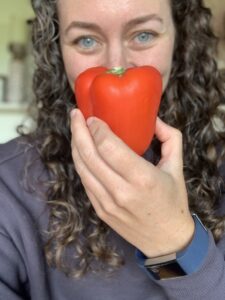Ever heard the term (acronym, really) WOOP? Neither had I. It’s a goal setting/ habit changing tool supported by 20-years of scientific research. I learned about the technique from the free happiness class Yale offers online.
What is WOOP?
Gabrielle Oettingen, an NYC psychology professor, has written the book and done the research on WOOPing. WOOP stands for Wish, Outcome, Obstacle, Plan. You focus and visualize on a goal or change you’d like to make for five minutes a day. To me it feels like a cross between mediation and self-hypnosis. It goes like this. You spend five, undistracted minutes, truly visualizing the following:
W: Your wish. Something you want to change or achieve. Big or small. Long term or short term.
O: The outcome of achieving your wish. What will happen if you get it? What will your life look like?
O: What obstacles will get in your way? Envision what road blocks you’ll come across and what might stop you from getting where you want to go.
P: Make a plan using if-then statements. If (this obstacle arises) then (I’ll combat it with this action).
What You Really Want
You are supposed to be honest with yourself and determine if you really want the thing you think you want. The very first time I WOOPed I did it with the intention of giving up sugar. In less than five minutes I realized I don’t want to give up sugar. What I really want is to make better food choices and eat sugar in moderation. It’s all or nothing for me when it comes to the sweet stuff. I eat the box of cookies or no cookies at all.
I altered my WOOP from “I want to give up sugar” to “I want to make healthy food choices that make me feel good, incorporate more variety, and be able to eat sweets and carbs in moderation.” That’s a hefty ask. Perhaps it should be three separate WOOPs. I’m not an expert on the process.
Initial WOOP Assessment
What I can tell you is that I’ve been doing it about five weeks and sometimes it truly feels like it is working, other times not so much. The other day I snacked switching form unhealthy sweets to bags of salty treats, basically eating my way through the day on every break I had between clients. But it was the first time I’d eaten mindlessly since I started the process. I’ve eaten chocolate the whole time, but again, I didn’t ask to stop chocolate together.
What baffled me was the one time I went to grab a piece of dark chocolate, picked it up, and then thought, “I don’t really want this right now” and put it down. Never, truly never in my life, have I picked up chocolate that didn’t go into my mouth.
A Preposterous Pepper
 Another peculiar moment involved a pepper. For a weeks worth of WOOPs I envisioned myself chopping up red, yellow, and orange peppers so they would be ready when I wanted a snack. When I did want a snack I had a hankering for peppers, which made the WOOPing process seem impressive. I’d never followed through on my plan to cut the peppers. Yet, without hesitation I opened the fridge, pulled out a red pepper and began devouring it like an apple, eating around it’s core of seeds.
Another peculiar moment involved a pepper. For a weeks worth of WOOPs I envisioned myself chopping up red, yellow, and orange peppers so they would be ready when I wanted a snack. When I did want a snack I had a hankering for peppers, which made the WOOPing process seem impressive. I’d never followed through on my plan to cut the peppers. Yet, without hesitation I opened the fridge, pulled out a red pepper and began devouring it like an apple, eating around it’s core of seeds.
Matt entered the room and looked surprised. “What are you doing” he wanted to know having never seen a person eat a pepper quite like this.
I told him that I thought my WOOP got some signals crossed. I was eating a pepper, but there was a misfire on the preparation part. On the one hand, I’d never craved peppers before, but I was definitely supposed to chop them up in advance. It was a strange feeling because I felt I’d hypnotized myself but messed up along the way—and that feeling was a tad nerve wracking.
The Secret vs WOOP
A few people I mentioned my WOOP experiment to suggested it’s like The Secret. I’d read The Secret when it came out back in 2006, and I’ve always been turned off by it. The idea that you could get what you want by visualization without taking action bugs me…but isn’t this sort of what I was doing? How could I reconcile my distaste for The Secret with the fact that something about WOOPing was having an impact on my behavior.
For me, here it the difference. WOOPing actually has scientific studies to back it up. Studies that look at different cultures, ages, and a variety of goals. It encourages you to make a plan of action to overcome specific obstacles you know you will encounter. That’s key.
You may have heard people say that visualizing something will make you better at it. For example if you visualize your golf swing you’ll get a better golf swing. This is only true if you actually practice golfing. You can’t visualize what you are unfamiliar with and become good at it. You have to have some understanding of what you are doing in your environment and body for the visualization to have an impact. So action is a key factor in the effectiveness of visualization. A WOOP is focused visualization. You are actually picturing situations you know and are familiar with.
When you are faced with the obstacle you’ve been visualizing—the second piece of chocolate cake—you have already played the scene out in your head and saw that you said, “no thanks.” Sort of like you do CPR training every year so when faced with a challenging situation you know what to do. You are creating your own little training sessions every day when you WOOP.
One thing Oettingen mentioned in the happiness course is that much like in Ghose Busters where you can’t cross the streams, when WOOPing you can’t cross the “O’s.” Apparently if you Wish, Obstacle, Outcome, Plan it doesn’t work.
Continue to WOOP?
As far as I’m concerned WOOPing is basically a form of meditation—something I’ve always needed to work on. It is not easy. Those five minutes require focus. Sometimes I find my mind wanders and I have to draw it back. Sometimes I find I keep losing track of my thoughts and can’t seem to bring it back. Those days make me feel like whether it works or not the exercise of WOOPing is actually a beneficial tool.
To WOOP or not to WOOP, that is the question: I’ll be WOOPing for now. I’m intrigued by it, but wouldn’t say it is 100% effective in altering my behaviors yet.
Keep Reading
Here’s my story about creating a meditation room. Spoiler alert: it didn’t help me meditate!
Could my personality make me bad at meditation?
Keep Connected
Order Your Copy of Keep Moving Today!
Subscribe to the Keep Moving Blog
Like the Personal Euphoria Facebook page
Find us on Twitter
Follow me on Instagram
Subscribe to my YouTube Channel
